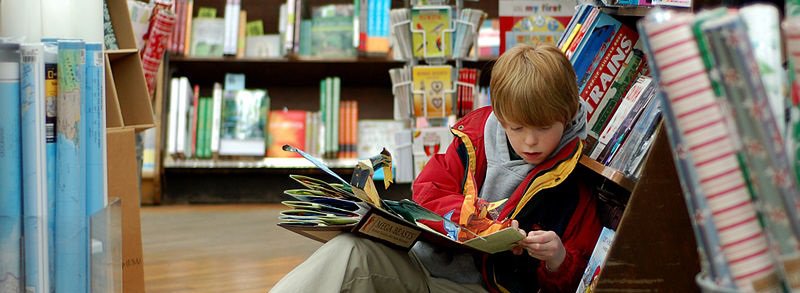Guideline: Target Group and Pedagogy

Photographer: Tim Pierce, Source: Wikimedia Commons
Contents
1) Target group
2) Close cycles
3) Low entry barrier
4) Outline and visualization
5) Relevance
1) Target Group
Serlo is for pupils of ten years or older. The concept of Serlo and the creation of learning materials specifically takes pupils into consideration who have difficulties with a subject and are afraid of it as a consequence as well as pupils who are behind in a subject and have a hard time with the teaching methods in school. Of course, students and good pupils are welcome to learn on Serlo. We believe that a simple and easily understood language makes learning more enjoyable for everybody.
Suitable for children but not childish.
2) Close Cycles
Users access content via the search engine, the curriculum or the subject tree. Once they're there, learning should work like reading a wikipedia article. If there is something unclear, a link should lead you to further information about the subject. Thus, more and more tabs open in your browser and eventually they will return to the first article. User can decide on their own how they want to navigate Serlo.
IMAGE
Specific Implementation
Content that once was part of one school book is now divided into many, small “learning objects”.
Always link to relevant basic knowledge/theory/explanations: Headings and explanations in solutions are linked with articles. Example and further information:
Sample solutions in math
Guidelines for solutions for math exercises
Relevant terms in articles are linked to further articles. Examples and further information:
Articles in math
Guidelines for math articles
Theory should always integrate with or link to exercises and examples of application: Exercises are integrated as often as possible in different parts of a article. This is done in three steps:
1) A especially extensively explained exercise are written directly in the the article.2) Example exercises are integrated into a spoiler.3) A link to further exercises is integrated at the end of a spoiler.Examples and further information:
Articles in math
Guidelines for math articles
The “related content (column on the right) next to every article of video helps users to continue learning without having search or navigate again. Examples and further information:
Articles in math
Guidelines for related content
3) Low Entry Barrier
The first seconds on a learning website are crucial: Do the users get involved with the learning experience? We have to anticipate certain situations:
It is especially true that our target group consists of users that are afraid of a subject the learning circumstances.
The increasing use of the internet leads to a short attention span of users which leads to a very quick decision whether to stay or leave.
Websites have become more sophisticated in both their multimedia as well as their design aspects. Users who have become used to this might be deterred by a colorless “text desert”.

Photographer: 4028mdk09 Source: Wikimedia Commons
That is why your first steps towards the content should be simple, funny or interesting.
Specific Implementation
Articles and Courses should, if possible, start with a small exercise, an example or a visualization that draws the user in.
_ Beispiele und weitere Informationen fehlen noch._
Simple Language, especially at the beginning! You can always make a text less complicated. The goal is:
To write in a way that requires the least amount of prior knowledge.
to avoid unfamiliar vocabulary, or vocabulary that could cause learning anxiety.
to use as few definitions or logical conclusions in a sentence as possible.
